Kevin Hung
Multi-Waveguide Pinching Antenna Placement Optimization for Rate Maximization
Dec 21, 2025Abstract:Pinching antenna systems (PASS) have emerged as a technology that enables the large-scale movement of antenna elements, offering significant potential for performance gains in next-generation wireless networks. This paper investigates the problem of maximizing the average per-user data rate by optimizing the antenna placement of a multi-waveguide PASS, subject to a stringent physical minimum spacing constraint. To address this complex challenge, which involves a coupled fractional objective and a non-convex constraint, we employ the fractional programming (FP) framework to transform the non-convex rate maximization problem into a more tractable one, and devise a projected gradient ascent (PGA)-based algorithm to iteratively solve the transformed problem. Simulation results demonstrate that our proposed scheme significantly outperforms various geometric placement baselines, achieving superior per-user data rates by actively mitigating multi-user interference.
Content-Aware RSMA-Enabled Pinching-Antenna Systems for Latency Optimization in 6G Networks
Dec 19, 2025Abstract:The Pinching Antenna System (PAS) has emerged as a promising technology to dynamically reconfigure wireless propagation environments in 6G networks. By activating radiating elements at arbitrary positions along a dielectric waveguide, PAS can establish strong line-of-sight (LoS) links with users, significantly enhancing channel gain and deployment flexibility, particularly in high-frequency bands susceptible to severe path loss. To further improve multi-user performance, this paper introduces a novel content-aware transmission framework that integrates PAS with rate-splitting multiple access (RSMA). Unlike conventional RSMA, the proposed RSMA scheme enables users requesting the same content to share a unified private stream, thereby mitigating inter-user interference and reducing power fragmentation. We formulate a joint optimization problem aimed at minimizing the average system latency by dynamically adapting both antenna positioning and RSMA parameters according to channel conditions and user requests. A Content-Aware RSMA and Pinching-antenna Joint Optimization (CARP-JO) algorithm is developed, which decomposes the non-convex problem into tractable subproblems solved via bisection search, convex programming, and golden-section search. Simulation results demonstrate that the proposed CARP-JO scheme consistently outperforms Traditional RSMA, NOMA, and Fixed-antenna systems across diverse network scenarios in terms of latency, underscoring the effectiveness of co-designing physical-layer reconfigurability with intelligent communication strategies.
Study of Brain Connectivity by Multichannel EEG Quaternion Principal Component Analysis for Alzheimer Disease Classification
May 21, 2025Abstract:The early detection of Alzheimer's disease (AD) through widespread screening has emerged as a primary strategy to mitigate the significant global impact of AD. EEG measurements offer a promising solution for extensive AD detection. However, the intricate and nonlinear dynamics of multichannel EEG signals pose a considerable challenge for real-time AD diagnosis. This paper introduces a novel algorithm, which is based on Quaternion Principal Component Analysis (QPCA) of multichannel EEG signals, for AD classification. The algorithm extracts high dimensional correlations among different channels to generate features that are maximally representative with minimal information redundancy. This provides a multidimensional and precise measure of brain connectivity in disease assessment. Simulations have been conducted to evaluate the performance and to identify the most critical EEG channels or brain regions for AD classification. The results reveal a significant drop of connectivity measure in the alpha bands. The average AD classification accuracy for all 4-channel combinations reached 95%, while some particular permutations of channels achieved 100% accuracy rate. Furthermore, the temporal lobe emerges as one of the most important regions in AD classification given that the EEG signals are recorded during the presentation of an auditory stimulant. The selection of key parameters of the QPCA algorithm have been evaluated and some recommendations are proposed for further performance enhancement. This paper marks the first application of the QPCA algorithm for AD classification and brain connectivity analysis using multichannel EEG signals.
Energy-Efficient Federated Learning and Migration in Digital Twin Edge Networks
Mar 20, 2025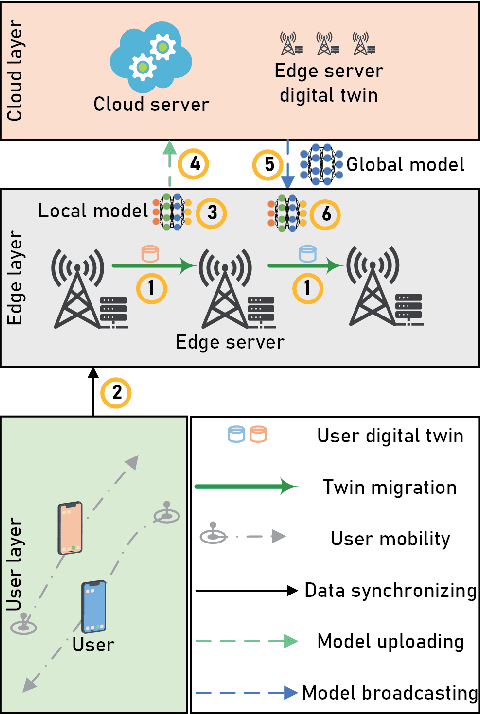
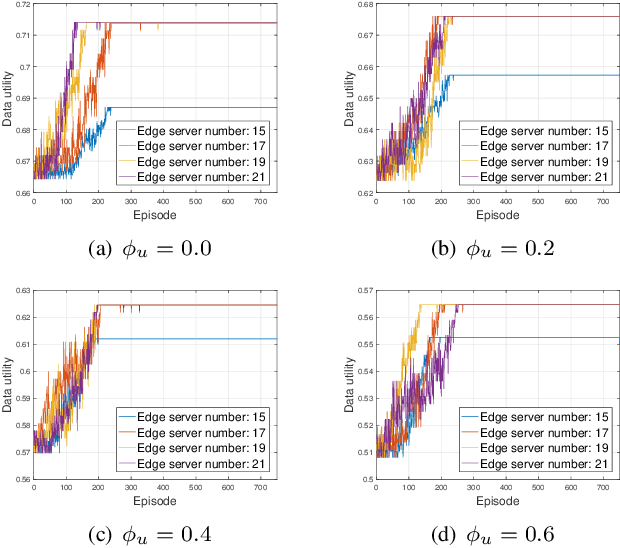
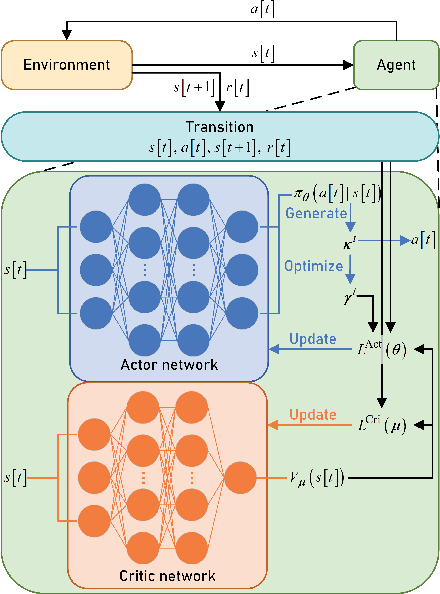
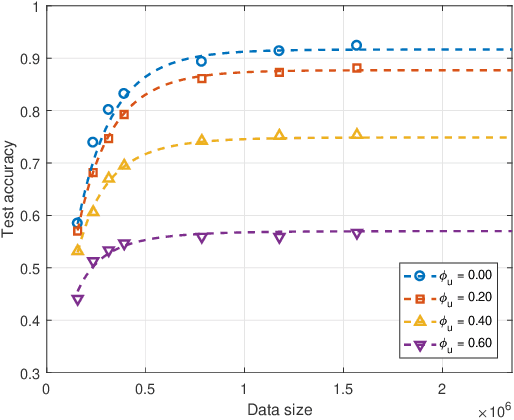
Abstract:The digital twin edge network (DITEN) is a significant paradigm in the sixth-generation wireless system (6G) that aims to organize well-developed infrastructures to meet the requirements of evolving application scenarios. However, the impact of the interaction between the long-term DITEN maintenance and detailed digital twin tasks, which often entail privacy considerations, is commonly overlooked in current research. This paper addresses this issue by introducing a problem of digital twin association and historical data allocation for a federated learning (FL) task within DITEN. To achieve this goal, we start by introducing a closed-form function to predict the training accuracy of the FL task, referring to it as the data utility. Subsequently, we carry out comprehensive convergence analyses on the proposed FL methodology. Our objective is to jointly optimize the data utility of the digital twin-empowered FL task and the energy costs incurred by the long-term DITEN maintenance, encompassing FL model training, data synchronization, and twin migration. To tackle the aforementioned challenge, we present an optimization-driven learning algorithm that effectively identifies optimized solutions for the formulated problem. Numerical results demonstrate that our proposed algorithm outperforms various baseline approaches.
WTTFNet: A Weather-Time-Trajectory Fusion Network for Pedestrian Trajectory Prediction in Urban Complex
May 29, 2024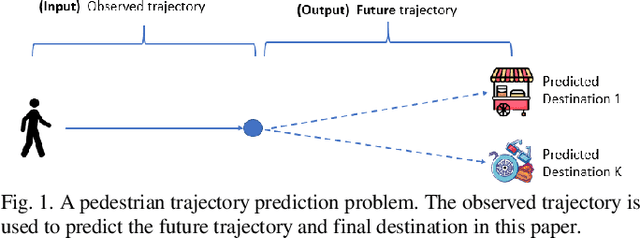
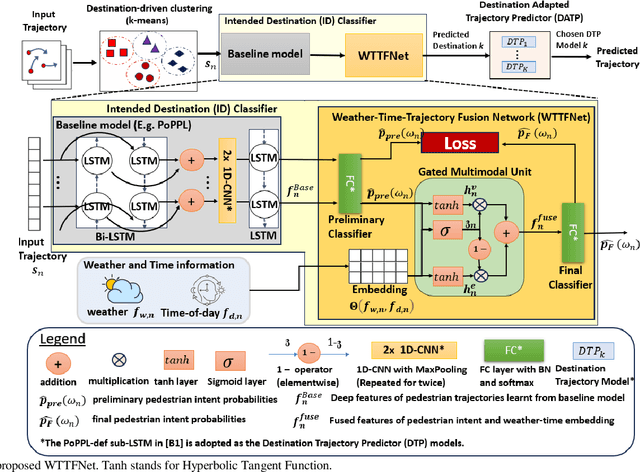
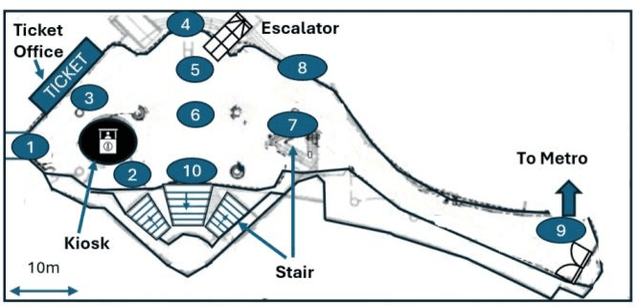
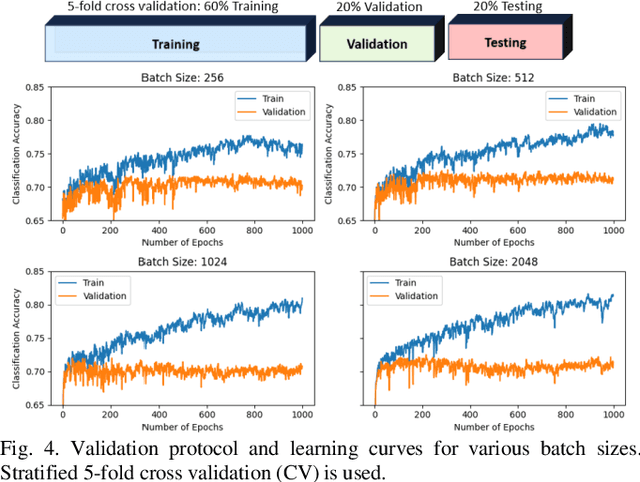
Abstract:Pedestrian trajectory modelling in an urban complex is challenging because pedestrians can have many possible destinations, such as shops, escalators, and attractions. Moreover, weather and time-of-day may affect pedestrian behavior. In this paper, a new weather-time-trajectory fusion network (WTTFNet) is proposed to improve the performance of baseline deep neural network architecture. By incorporating weather and time-of-day information as an embedding structure, a novel WTTFNet based on gate multimodal unit is used to fuse the multimodal information and deep representation of trajectories. A joint loss function based on focal loss is used to co-optimize both the deep trajectory features and final classifier, which helps to improve the accuracy in predicting the intended destination of pedestrians and hence the trajectories under possible scenarios of class imbalances. Experimental results using the Osaka Asia and Pacific Trade Center (ATC) dataset shows improved performance of the proposed approach over state-of-the-art algorithms by 23.67% increase in classification accuracy, 9.16% and 7.07% reduction of average and final displacement error. The proposed approach may serve as an attractive approach for improving existing baseline trajectory prediction models when they are applied to scenarios with influences of weather-time conditions. It can be employed in numerous applications such as pedestrian facility engineering, public space development and technology-driven retail.
CAPE: CAM as a Probabilistic Ensemble for Enhanced DNN Interpretation
Apr 04, 2024Abstract:Deep Neural Networks (DNNs) are widely used for visual classification tasks, but their complex computation process and black-box nature hinder decision transparency and interpretability. Class activation maps (CAMs) and recent variants provide ways to visually explain the DNN decision-making process by displaying 'attention' heatmaps of the DNNs. Nevertheless, the CAM explanation only offers relative attention information, that is, on an attention heatmap, we can interpret which image region is more or less important than the others. However, these regions cannot be meaningfully compared across classes, and the contribution of each region to the model's class prediction is not revealed. To address these challenges that ultimately lead to better DNN Interpretation, in this paper, we propose CAPE, a novel reformulation of CAM that provides a unified and probabilistically meaningful assessment of the contributions of image regions. We quantitatively and qualitatively compare CAPE with state-of-the-art CAM methods on CUB and ImageNet benchmark datasets to demonstrate enhanced interpretability. We also test on a cytology imaging dataset depicting a challenging Chronic Myelomonocytic Leukemia (CMML) diagnosis problem. Code is available at: https://github.com/AIML-MED/CAPE.
POP-CNN: Predicting Odor's Pleasantness with Convolutional Neural Network
Mar 19, 2019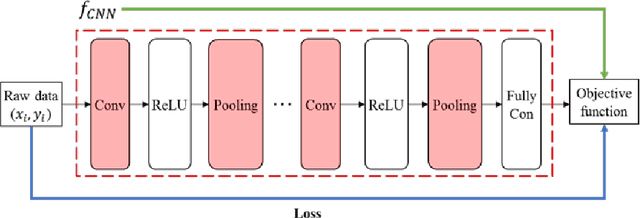
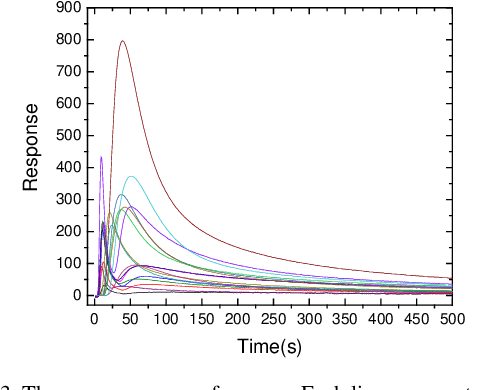
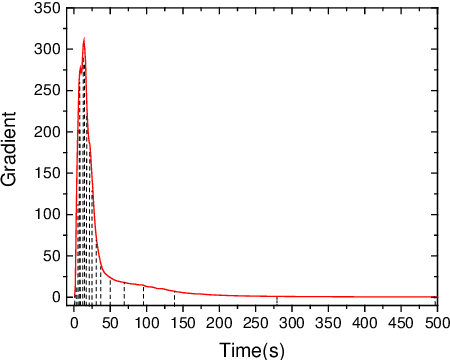
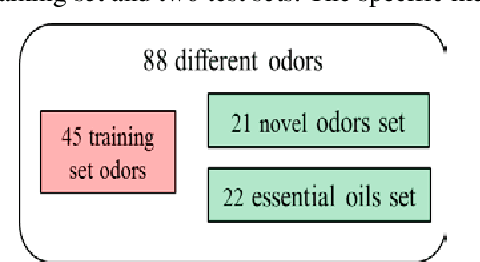
Abstract:Predicting odor's pleasantness simplifies the evaluation of odors and has the potential to be applied in perfumes and environmental monitoring industry. Classical algorithms for predicting odor's pleasantness generally use a manual feature extractor and an independent classifier. Manual designing a good feature extractor depend on expert knowledge and experience is the key to the accuracy of the algorithms. In order to circumvent this difficulty, we proposed a model for predicting odor's pleasantness by using convolutional neural network. In our model, the convolutional neural layers replace manual feature extractor and show better performance. The experiments show that the correlation between our model and human is over 90% on pleasantness rating. And our model has 99.9% accuracy in distinguishing between absolutely pleasant or unpleasant odors.
Deep Nearest Class Mean Model for Incremental Odor Classification
Jan 08, 2018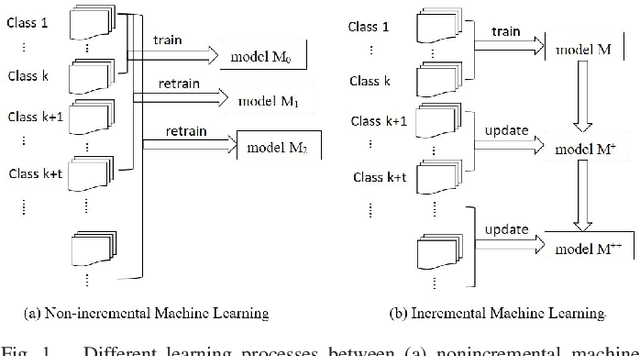
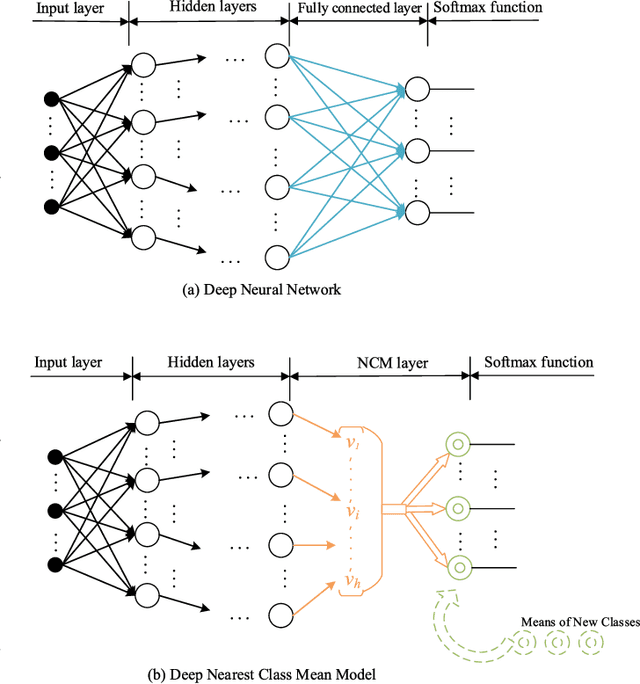
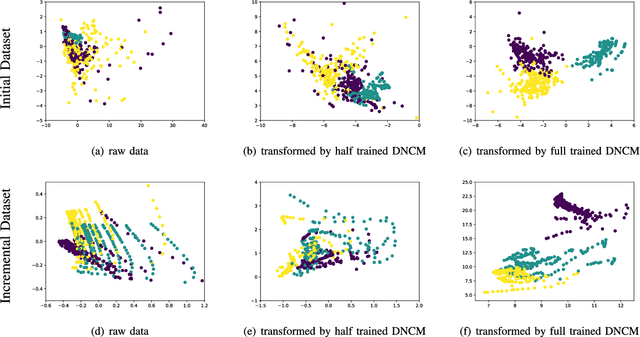
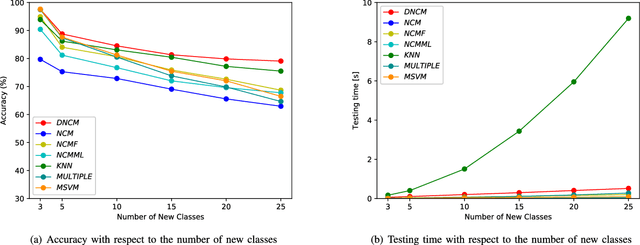
Abstract:In recent years, more and more machine learning algorithms have been applied to odor recognition. These odor recognition algorithms usually assume that the training dataset is static. However, for some odor recognition tasks, the odor dataset is dynamically growing where not only the training samples but also the number of classes increase over time. Motivated by this concern, we proposed a deep nearest class mean (DNCM) model which combines the deep learning framework and nearest class mean (NCM) method. DNCM not only can leverage deep neural network to extract deep features, but also well suited for integrating new classes. Experiments demonstrate that the proposed DNCM model is effective and efficient for incremental odor classification, especially for new classes with only a small number of training examples.
 Add to Chrome
Add to Chrome Add to Firefox
Add to Firefox Add to Edge
Add to Edge